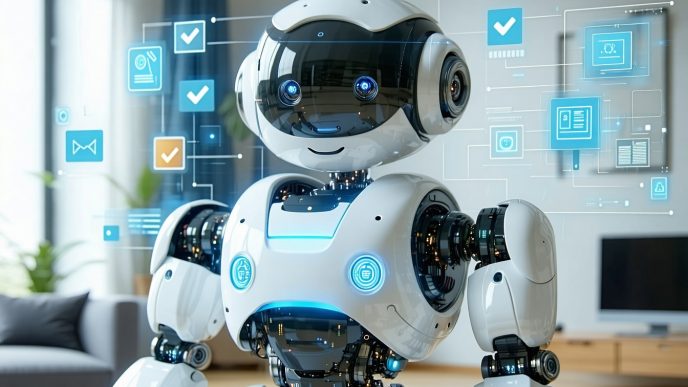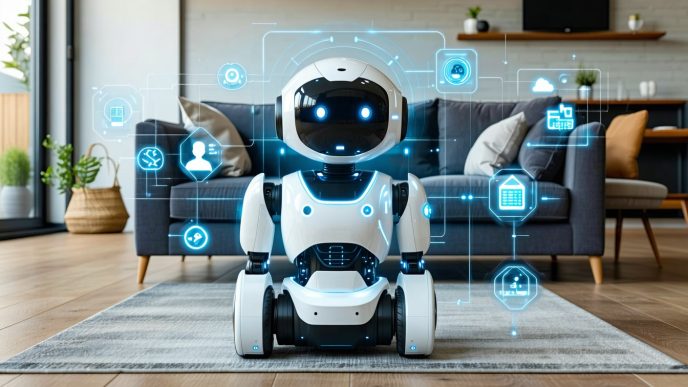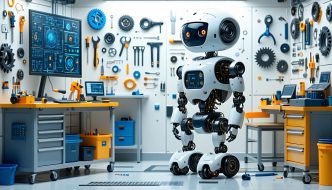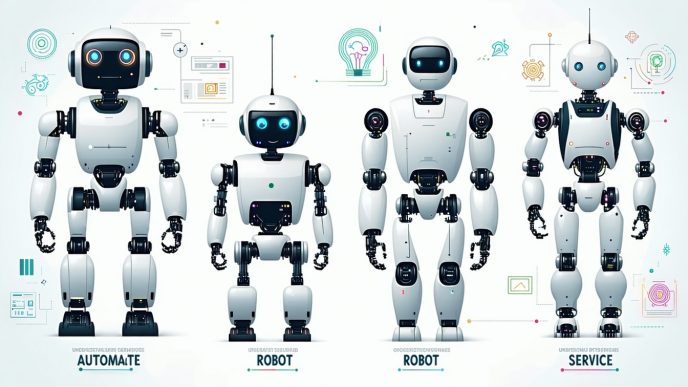Understanding the Importance of Software Support in Robot Investments
Investing in a home robot requires careful consideration of various factors, especially software support. Software updates and upgrades play a crucial role in ensuring the robot functions optimally within the user’s home environment.
Why Software Support Matters
Software support directly impacts the performance, security, and longevity of the robot. Regular updates provide access to new features, enhancements, and fixes for bugs that may affect functionality. This ongoing support can significantly enhance the user experience, ensuring the robot remains efficient and effective over time.
| Key Aspects of Software Support | Description |
|---|---|
| Performance Enhancement | Regular updates often improve the robot’s capabilities, making tasks easier and quicker. |
| Security Improvements | Updates can patch vulnerabilities, enhancing the safety of the device against cyber threats. |
| Feature Additions | New features or smart integrations can be added, increasing the robot’s versatility. |
Real-World Implications of Software Support
The implications of robust software support extend to the everyday usability of a robot. Users may face issues such as outdated functionalities or increased security risks without regular robot software updates and upgrades. In contrast, a well-supported robot can adapt to new technologies, improve efficiency with smarter features, and ensure compatibility with other devices in a smart home ecosystem.
| Implications of Insufficient Software Support | Outcomes |
|---|---|
| Increased Downtime | Lack of support may lead to malfunctioning robots that cannot complete their tasks. |
| Security Risks | Outdated software can expose the robot to potential hacking and misuse. |
| Limited Capability | Robots without updates may not integrate with newer smart home devices, leading to a fragmented user experience. |
By understanding the importance of software support and the potential real-world effects, first-time robot buyers, tech-savvy families, early adopters, and smart home users can make informed decisions about their investment. For a comprehensive guide on what to consider before making a purchase, refer to our article on what to know before you buy a robot.
Factors to Consider
When investing in a robot, it is essential to evaluate several critical factors related to software support. These elements can significantly affect the robot’s performance, longevity, and overall user experience.
Longevity of Software Updates
The availability of software updates is a vital consideration for any robot investment. Regular updates can enhance the robot’s capabilities, fix bugs, and improve security. Therefore, potential buyers should inquire about the manufacturer’s history regarding software support.
| Update Frequency | Typical Support Duration |
|---|---|
| Monthly | 3-5 years |
| Quarterly | 2-4 years |
| Annually | 1-3 years |
Understanding these timelines can help buyers decide which robot offers the best long-term value in terms of software updates.
Compatibility with Future Tech Advancements
As technology evolves, compatibility with future advancements can determine whether a robot remains effective over time. It is crucial to assess if the robot’s software is designed to accommodate new technologies, such as smart home integrations or AI enhancements. A robot that can adapt to future systems can provide a better return on investment.
Manufacturers often provide roadmaps on their websites outlining planned updates. Knowing these details can guide buyers toward products that will remain relevant and functional as technology progresses. For more details, check out understanding robot types and capabilities.
Security and Privacy Concerns
With increasing reliance on connected devices, security and privacy issues cannot be overlooked. Robots often require internet access, which poses potential vulnerabilities. Buyers should investigate the manufacturer’s security measures to protect user data and ensure regular updates are provided to shield against new threats.
| Security Feature | Importance Level |
|---|---|
| Data Encryption | High |
| Regular Security Updates | High |
| User Privacy Controls | Medium |
Having robust security features and continuous updates can help users feel more secure about their investment. Furthermore, details on warranty and customer support are essential to understand how issues will be managed in the long run. For insights into these aspects, refer to robot warranty and customer support.
By considering the longevity of software updates, compatibility with future technology, and security measures, prospective buyers can make informed decisions regarding their robot investment. These factors contribute significantly to the overall value and effectiveness of the robot in a smart home environment.
Ensuring Software Reliability
When investing in a home robot, understanding the importance of software reliability is essential to maximize its potential and longevity. Regular updates and upgrades play a vital role in enhancing functionality and overall user experience.
The Role of Regular Updates and Upgrades
Software updates serve as important enhancements that provide new features, improve security, and fix bugs. These continuous improvements can significantly affect the robot’s capabilities. Regular updates ensure that the robot is equipped with the latest advancements in technology, which can include improved algorithms for navigation, better data processing, and enhanced user interfaces.
| Type of Update | Purpose | Frequency |
|---|---|---|
| Security Updates | Protect against vulnerabilities | Monthly or as needed |
| Feature Upgrades | Introduce new functions | Quarterly or bi-annually |
| Bug Fixes | Resolve software issues | As necessary |
A well-supported robot should receive a blend of these updates throughout its lifespan. First-time buyers should seek out models that promise consistent support in terms of software maintenance. For additional insights, refer to our article on what to know before you buy a robot.
Impact on Performance and Functionality
The effectiveness of a robot heavily relies on the performance of its software. Regularly updated software can greatly enhance operational efficiency, leading to a more reliable user experience. Additionally, improved functionality results from adjustments made based on user feedback and technological advancements.
| Performance Metric | Before Updates | After Updates |
|---|---|---|
| Processing Speed | 100 ms | 75 ms |
| Error Rate | 5% | 2% |
| User Satisfaction | 70% | 90% |
Investing in a robot with robust software updates and upgrades means fewer issues related to functionality and performance. Understanding robot maintenance and repair needs can provide further clarity on how to keep your robot performing optimally over time.
In summary, ensuring software reliability through regular updates and upgrades significantly impacts the long-term performance and functionality of home robots. Buyers should prioritize models with strong software support to make the most informed investment.
Challenges and Solutions
When investing in a home robot, one of the significant challenges faced by buyers is dealing with outdated software. This issue can hinder a robot’s performance and limit its functionality. Here’s a look at the challenges associated with outdated software and possible solutions for upgrading.
Dealing with Outdated Software
Outdated software can lead to several problems for robot users, including security vulnerabilities, reduced efficiency, and compatibility issues with new features or technology. As technology rapidly evolves, a robot’s outdated software may not adequately support continuous updates or advancements.
The effects of outdated software can be significant, impacting user experience and operational effectiveness. The table below highlights some common challenges associated with outdated robot software:
| Challenge | Description |
|---|---|
| Security Risks | Increased risk of breaches or malware. |
| Compromised Functionality | Inability to access new features. |
| Performance Lag | Slower processing and operational delays. |
| Support Limitations | Lack of troubleshooting and customer support. |
Options for Upgrading Software
To address the challenges posed by outdated software, buyers should explore available options for upgrading their robots. Various upgrade paths can enhance software reliability, ensuring the robot remains functional and effective over time.
Common options include:
-
Manufacturer Updates: Many robot manufacturers release regular software updates that users can install directly. Keeping the robot connected to Wi-Fi allows it to download these updates automatically.
-
Third-Party Software Solutions: Some users may opt for third-party software that provides enhancements and additional features not available in the standard software.
-
Manual Upgrades: If a robot supports manual updates, users can check for and download upgrades from the manufacturer’s website.
-
Cloud-based Solutions: Some robots utilize cloud services that continuously update their software, ensuring users benefit from the latest features and improvements without needing manual intervention.
| Upgrade Option | Pros | Cons |
|---|---|---|
| Manufacturer Updates | Seamless integration and support | Might not include all features |
| Third-Party Solutions | Additional features and flexibility | Compatibility risks |
| Manual Upgrades | Full control over updates | Requires user initiative |
| Cloud-based Solutions | Automated updates with minimal user involvement | Requires stable internet access |
For buyers considering the implications of robot software updates and upgrades, it’s crucial to understand the various options available. Keeping abreast of these updates can significantly improve the robot’s performance, as detailed in our article on robot maintenance and repair needs. Understanding these elements can aid first-time buyers in making informed decisions about their robot investments.
Future-Proofing Your Investment
In the rapidly evolving world of technology, ensuring that a robot investment is future-proof is crucial. This involves selecting a robust software support system and maximizing the benefits of updates and upgrades.
Choosing a Robust Software Support System
Selecting a durable software support system is fundamental for long-term satisfaction with a robot. A strong support system should include timely updates, excellent customer service, and a clear upgrade path.
Consider the following criteria when evaluating software support:
| Criteria | Importance Level (1-5) | Description |
|---|---|---|
| Frequency of Updates | 5 | Regular updates enhance functionality and security. |
| Customer Service | 4 | Accessible support helps resolve issues efficiently. |
| Upgrade Path | 5 | Clear future upgrades ensure that the robot remains compatible with advancing technology. |
| Documentation | 3 | Comprehensive manuals and guides aid in ease of use. |
Making informed choices about software support can ensure a longer lifespan for the robot, ultimately contributing to a better user experience. For detailed insights into the various robot types you may encounter, refer to our article on understanding robot types and capabilities.
Maximizing the Benefits of Software Updates
Software updates are not merely routine; they can significantly enhance a robot’s performance and capabilities. To fully capitalize on robot software updates and upgrades, consider these strategies:
- Enable Automatic Updates: This ensures that the robot receives the latest features and security patches without manual intervention.
- Stay Informed: Subscribe to newsletters or forums related to the robot to get timely notifications about new updates.
- Backup Important Data: Before a software update, it’s wise to back up data to prevent loss.
- Participate in User Communities: Engaging with other users can provide insights into the latest updates and their impact.
These practices can optimize the robot’s functionality and assist in adapting to newer technology trends. For more information on maintenance practices that will extend your robot’s life, check out our article on robot maintenance and repair needs.
By carefully selecting a robust software support system and actively engaging with updates, individuals can ensure their robot remains a valuable and efficient part of their smart home ecosystem. Understanding the associated technical aspects will enhance confidence and satisfaction with your investment in robotic technology.















